Stay up to date with our latest innovations, partners, events and much more!


Products and features
2 min read
09 June 2025
Sidekick: Everything’s Easier When You Can Just Ask
Sidekick is more than just an AI assistant, it’s your go-to digital helper, seamlessly integrated into your Cape experience. It’s designed to make your work smoother, faster, and more efficient. But are you making the most of it?

Events
2 min read
09 June 2025
Join us in Cannes
That's right, it's almost Cannes Lions again. We’ll be there at the LBB Beach, APA Pool Party and an exclusive lunch with the Cape and Peach teams. Come join us!

Blog
3 min read
04 April 2025
Breaking Barriers: Why Media and Creative Teams Should Work Together More Often
In advertising, media and creative teams have traditionally worked separately, passing ideas back and forth to get through projects. But as things progress quickly and teams have to work faster than ever, collaboration is no longer optional - it’s essential.
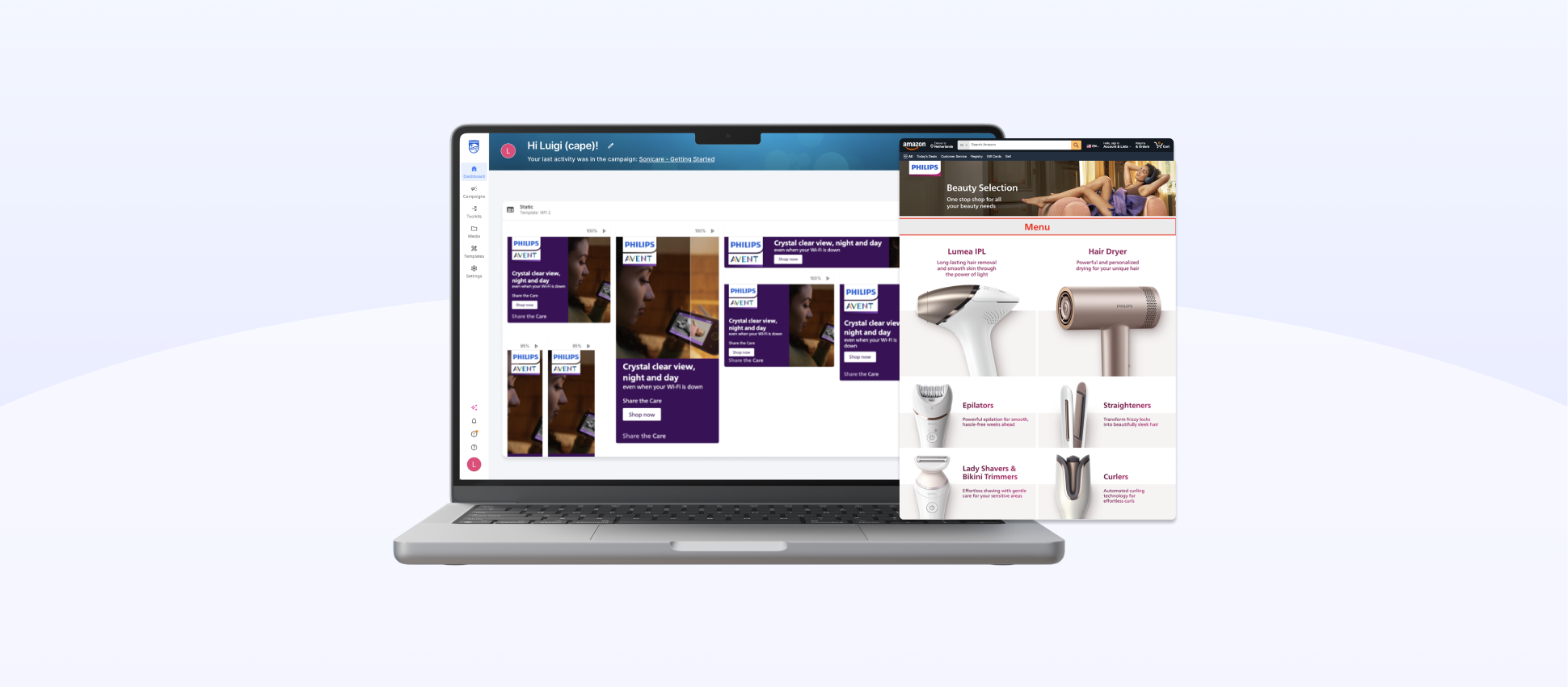
Products and features
4 min read
11 March 2025
How Cape Solves Amazon Storefront Creation Challenges
As businesses grow, managing an increasing number of marketing concepts can become a logistical nightmare. From banners to videos and brand pages, finding and organising these assets across multiple business units often leads to inefficiency and confusion. That's where Cape comes in.

Industry insights
3 min read
20 January 2025
The New Instagram Layout Update: How to Optimise Your Feed for Non-Square Posts
Recently, Instagram has rolled out yet another update. What makes this one different? For casual users, a layout change of your feed may be just another visual element of the app to get used to. For marketers, it affects just about every aspect of your content strategy.
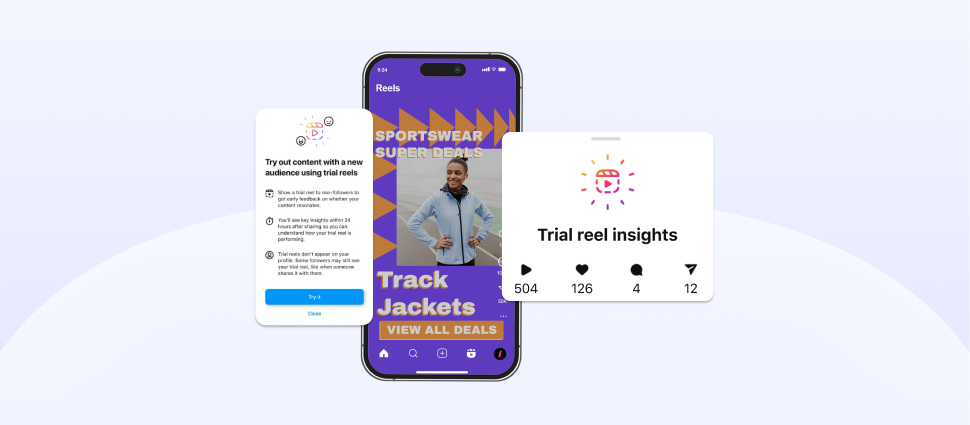
Industry insights
3 min read
02 January 2025
Optimising Your Content Strategy With Trial Reels
With shorter attention spans and a constant flow of information, creating engaging content is one of the key challenges for brands to get noticed by greater audiences and even their own followers. This is why optimising content strategy is extremely important, and focusing on trying to enhance your content can significantly improve viewership. One of the latest tools to help with this is Trial Reels on Instagram.

Blog
3 min read
20 November 2024
Navigating the Challenges of Retail Media
More and more major retailers are launching and managing their own advertising platforms, a trend known as retail media. In 2023, Amazon led the way, earning $46.9 billion from ads, mostly from sponsored ads on its site. While retail media offers big growth opportunities, it also comes with challenges. Let’s take a closer look at some of the key challenges and how to overcome them.

Products and features
4 min read
23 October 2024
Streamlining Google Ads Approval: How Cape Prevents Ad Rejections
One of the most frustrating challenges marketers face when running Google Ads campaigns is ad rejection. These ad rejections not only delay launches but can also impact performance metrics, costing valuable time and money.

Blog
4 min read
21 October 2024
Revolutionising Display Advertising: How Automation Transforms Ad Creation
Display ads have long been a cornerstone of digital advertising, offering businesses a visually appealing way to engage with potential customers. However, not all display ads are created equal. In this blog, we’ll guide you through the challenges and solutions that come with display advertising!

Blog
2 min read
08 October 2024
Cape’s Official Partnerships with Google & Meta: Elevating Your Campaigns
We’re excited to announce that Cape is an official partner of both Google and Meta. This marks a major milestone in our mission to deliver groundbreaking tech solutions to brands, advertisers, and agencies across the globe. These partnerships show our commitment to providing cutting-edge marketing tools and personalised support to help you reach your marketing goals.

Products and features
2 min read
30 September 2024
Streamlining Campaigns: Automate Your Publishing
Inefficiencies in the campaigning process can lead to missed campaign opportunities and high agency or in-house costs. Often, a significant amount of time is dedicated to repetitive tasks, such as manually booking campaigns in the ad tech platforms.

Products and features
5 min read
17 September 2024
Contextual Campaigns: The Future of Ad Personalization Without Cookies
Gone are the days of one-size-fits-all advertising. One innovative way to engage with audiences is Dynamic Creative Optimisation (DCO), a technique that enables advertisers to create personalised and relevant ads at scale.
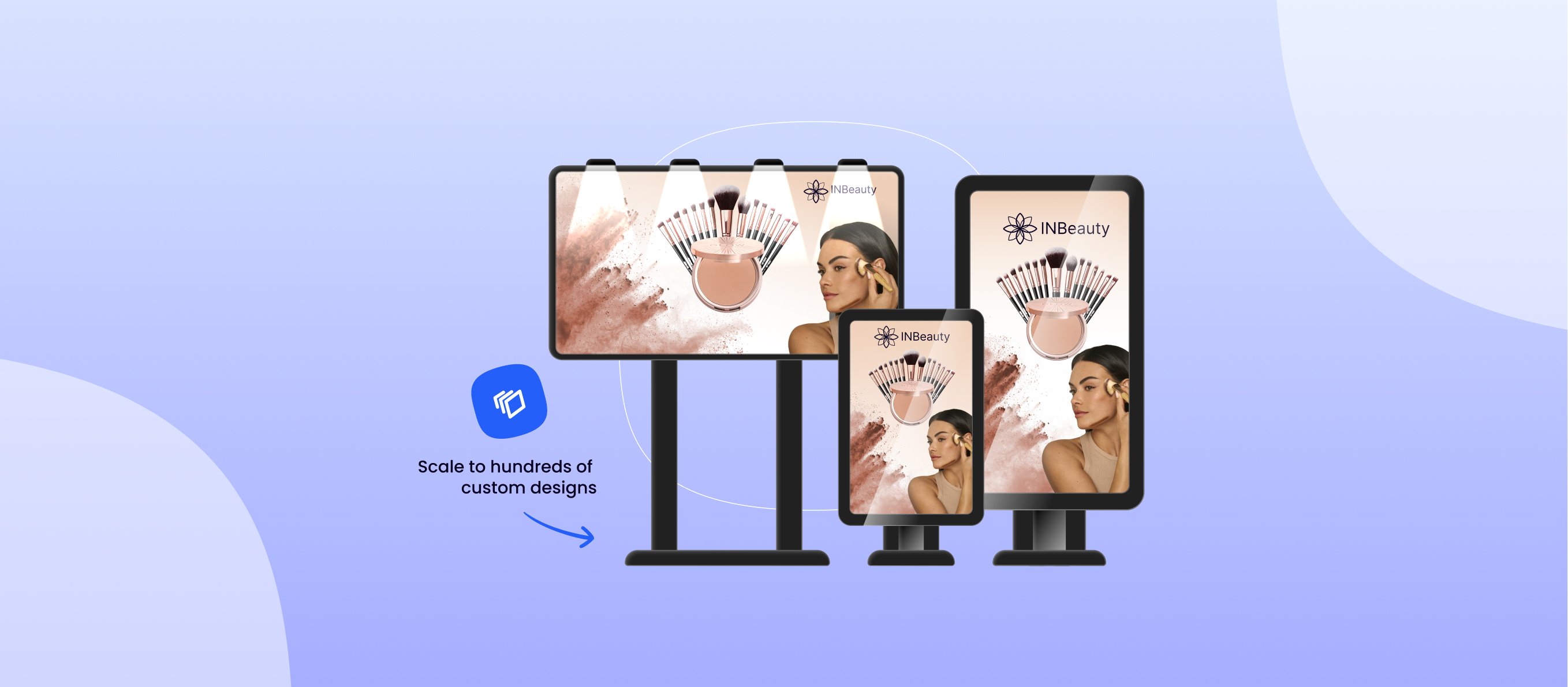
Blog
5 min read
10 September 2024
Revolutionising DOOH Advertising: How Automation Transforms Ad Creation
DOOH ads are a highly effective way to reach customers, but they come with challenges. From creative versioning to managing hundreds of different formats, DOOH can be time-consuming and error-prone. This is where Cape comes in!

Blog
4 min read
05 September 2024
Mastering Social Media Ads: Best Practices for Every Platform
Mastering social media advertising can be a game-changer for your business, but each platform requires its own unique approach to truly shine.

Products and features
1 min read
29 August 2024
Stay Ahead of the Curve with Cape’s New Promarketers Newsletter
Be the first to gain exclusive access to the latest product updates, industry insights and client success stories.

Industry insights
3 min read
16 July 2024
Learn From Accenture: Stay Ahead of the Curve With These 5 Trends
Cost-cutting has pushed customer obsession down the priority list. It's time to prioritise customer experience again. Read more about this in this recent research by Accenture.

Blog
3 min read
16 July 2024
Navigating Local Activation Challenges
Imagine if every store opening or promotion could speak directly to the unique tone of voice of each community. Local activation is all about making your brand the hometown hero everywhere you go.

Products and features
2 min read
12 July 2024
Elevate Your Campaigns with AI-Generated Voice-Overs: A Success Story with KLM
Our Voice-Over Generator (Text to Speech) is revolutionising how businesses create impactful, multilingual content. A recent success story comes from KLM, who leveraged this innovative feature for their global campaign.

Blog
5 min read
10 July 2024
Revolutionising Recruitment: Personalised and Localised Campaigns for Success
Many businesses struggle with personalising and localising their recruitment campaigns, missing out on the opportunity to connect with the right candidates. With creative automation, you can easily launch successful recruitment campaigns across multiple markets.
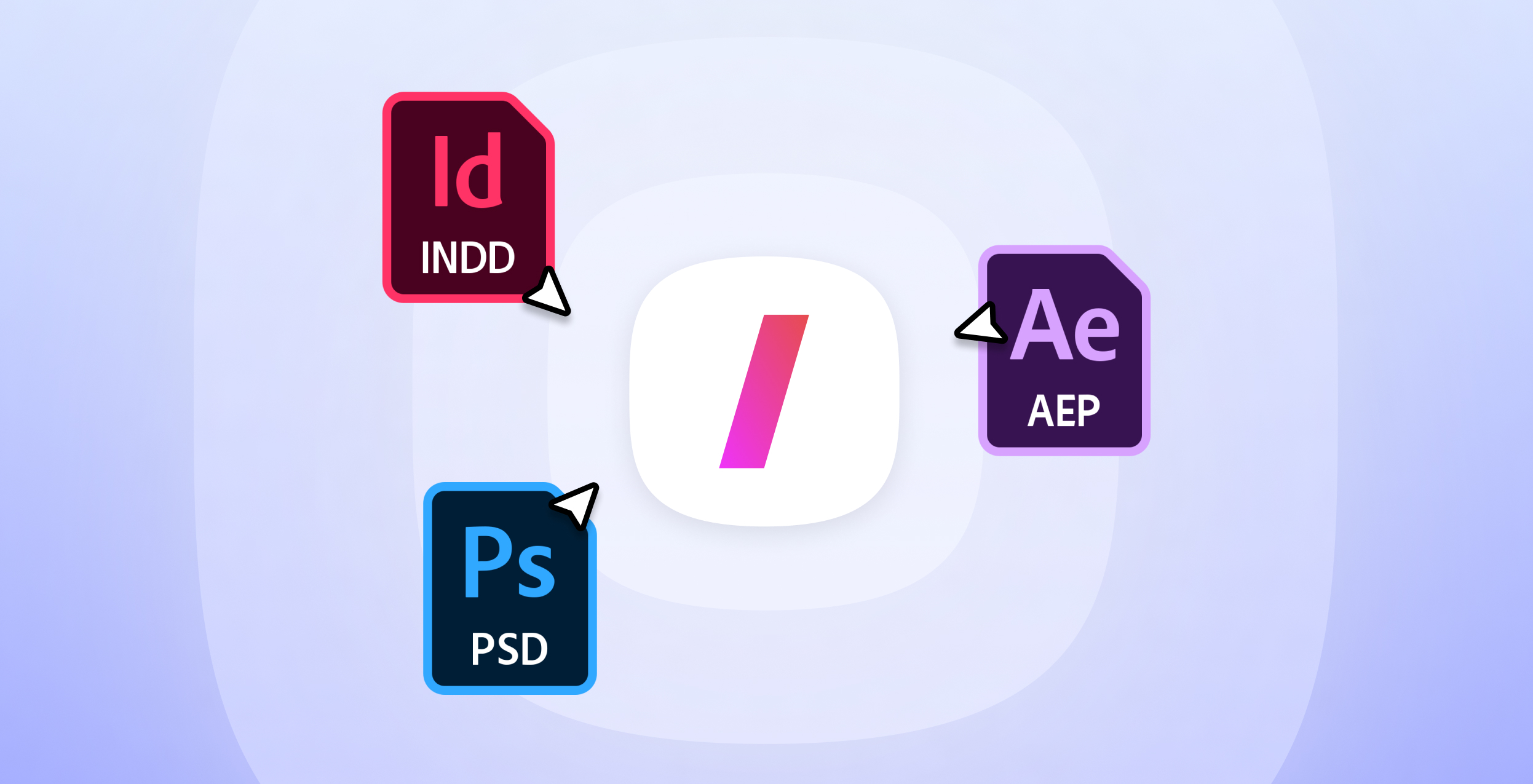
Products and features
3 min read
04 July 2024
Mastering Dynamic Content Creation: Unlock Your Creative Potential with Cape's Adobe Integrations
Our suite of Adobe plugins—After Effects, InDesign, and Photoshop—empowers teams to create, manage, and deploy dynamic content effortlessly, even without extensive design experience.

Events
3 min read
04 July 2024
Catch Up on June’s Exciting Event Highlights!
Last month, our team had the incredible opportunity to connect, educate, and present at three exciting events! We participated in Emerce Digital Marketing Live and the DDMA Creative Mixer in Amsterdam, as well as DMWF Global in London.

Blog
4 min read
30 May 2024
Mastering Travel Advertising: Leveraging Automation and Localisation for Global Success
There are so many great possibilities for travel advertising, whether you are a car rental, an airline, a hotel chain or a travel agent. But, digital marketing does come with its challenges when the world is your playground.

Events
2 min read
16 May 2024
Celebrate Innovation and Collaboration with Us at Upcoming Industry Events!
Join as at Emerce DML Amsterdam, DDMA creative mixer in Amsterdam and DMWF Global in London!

Blog
3 min read
14 May 2024
The Power of Smart Cross-Functional team Collaboration: Driving Efficiency and Innovation in Today's Companies
In the modern workplace, collaboration is key. Many companies fail to tap into the expertise of their different teams, even when they share a workspace. It's time to prioritise cross-functional team collaboration.
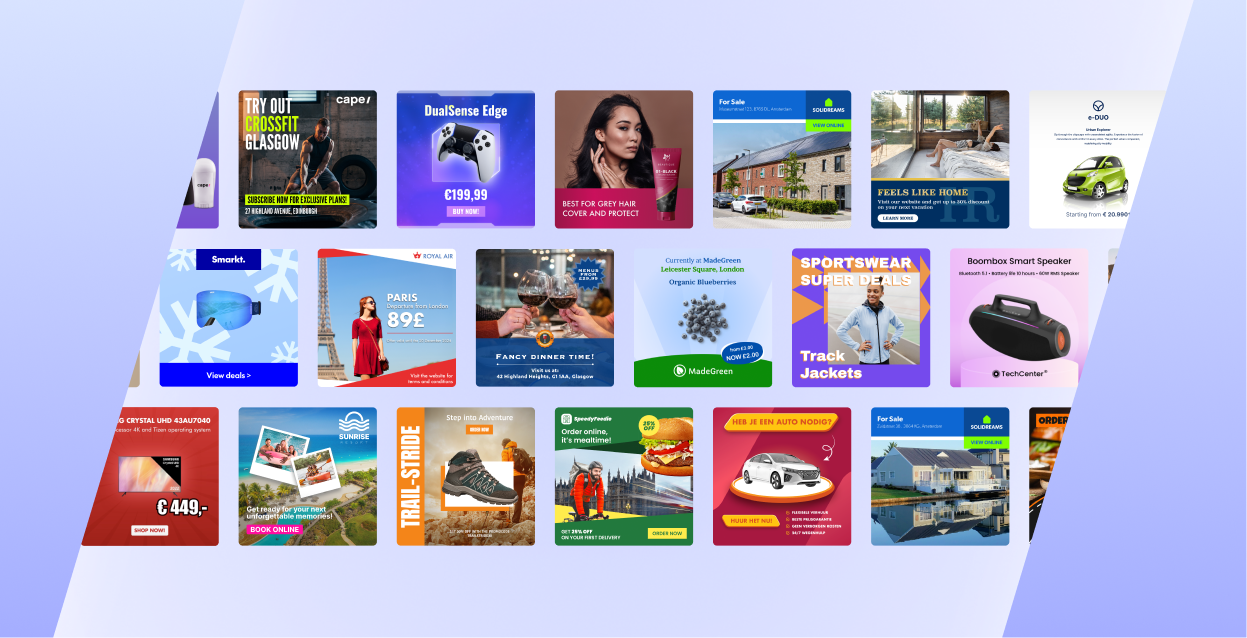
Industry insights
3 min read
13 May 2024
Maximising Impact: Unveiling Meta's Advantage+ Catalogue Ad Innovations
In today's digital marketplace, meaningful customer connections are more important than ever. However, factors like high competition, immense content demand, privacy regulations, and cookie limitations can make it challenging to reach your audience effectively. Meta’s Advantage+ catalogue ad developments make sure your beautiful products and ads will not go unnoticed.

Industry insights
1 min read
18 April 2024
Unlocking New Possibilities: Elevate Your CTV Performance with Disney+
We've officially launched an integration with Disney’s Real-time Ad Exchange (DRAX) via Google’s Display & Video 360.

Blog
8 min read
18 April 2024
Efficiency in Digital Advertising: A Conversation with Yannick Kant
As a seasoned digital media professional who's navigated through the complex online advertising world, Yannick witnessed firsthand the challenges and successes that come with crafting impactful campaigns in a fast-paced environment. We caught up with Yannick to explore what it's like working in an industry where technology, data, and understanding your audience are all intertwined.

Blog
4 min read
08 April 2024
Going Global: How to Comply with Advertising Laws and Regulations in Every Market
In the dynamic world of advertising, navigating the diverse landscape of global markets can be a difficult task. Each region comes with its own set of laws and regulations, making it crucial for businesses to ensure compliance across all markets. Let’s explore how you can effectively adhere to these rules while maintaining brand integrity and driving successful advertising campaigns worldwide.

Blog
2 min read
08 March 2024
The Biggest Ad Challenges in Food Delivery Today and How to Overcome Them
In response to the growing number of grocery shoppers going online, food retailers are seeking ways to connect with their customers on online platforms and promote delivery options. Even for established food delivery platforms, the large diversity of customers, regions and product availability makes it difficult to create locally relevant ads at scale.

Products and features
2 min read
23 February 2024
Meet Sidekick!
Exciting news! We're introducing a new AI innovation that will take your experience with Cape to the next level. Meet Sidekick – your new chatbot-like AI assistant, ready to guide you at every step.

Blog
7 min read
13 February 2024
Dynamic Product Ads: What, Why and How?
By using the power of data-driven personalisation, DPAs offer businesses a unique opportunity to engage with their target audience in a more personalised and relevant manner. In this blog, we'll explore what Dynamic Product Ads are, how they work, and the remarkable benefits and challenges they bring to the table.

Blog
4 min read
29 January 2024
Change Your Advertising Game with Cape: Unleashing the Power of Dynamic Creativity and Meta Recognition
Are you tired of uninspiring and underperforming traditional brochure-style product ads? It's time to transform your creative processes with Cape!

Blog
3 min read
24 January 2024
The Future of Customer Experience: The Evolution from Chatbots to Conversational Commerce
Fewer than a third of the customers use chatbots because, let's face it, they're a bit too robotic. These chatbots struggle to grasp customers’ specific needs and respond with a too generic, rule-based script. But, there is a game-changer on the rise: Conversational Commerce, powered by the magic of generative AI.

Blog
2 min read
11 December 2023
Optimising Your Q4 Marketing Operations with Cape: A Guide to Streamlining Workflow
As the 2023 Holiday Shopping Season unfolds, retailers are trying everything to connect with their customers. From loyalty programs to discounts, increased convenience, price match guarantees and more. Yet, these initiatives are just part of the equation. The pressing question is whether it's feasible to implement these strategies and whether these will truly connect with the customer and meet their expectations.

Events
2 min read
01 December 2023
Webinar: "Elevate and Automate: Unleashing AI in Creative Campaigns with Cape"
Recap of our recent webinar about AI!

Blog
3 min read
01 December 2023
Revolutionising Marketing: Unleashing the Power of Cape's Creative Automation
The landscape of marketing is undergoing a seismic shift, with challenges pressing in from all sides. Efficiency is non-negotiable, as campaigns demand quicker turnaround times, personalised content, and all this within the constraints of a tight budget. On the flip side, the success of any campaign hinges on the quality of its creative, regardless of industry or type.

Blog
3 min read
27 November 2023
The Future of Creativity: How Automation Empowers Human Ingenuity
With the rise of marketing technology, there is a common misconception that human creativity and ingenuity have become obsolete. Contrary to this belief, the market is undergoing a big transformation where automation and human ingenuity are merging into a powerful synergy. In this blog post, we will show you how the two can complement each other instead of compete against each other.

Blog
4 min read
17 November 2023
Black Friday Frenzy: Unleashing the Potential of Creative Campaign Automation
Whether you are participating in Black Friday or not, there's a lot of campaign stress as the end-of-year approaches. Let's guide you through this busy start of the holiday season by tackling these common challenges!

Blog
3 min read
10 November 2023
Campaign Automation 101: Streaming Services
Attention to the marketers and designers in the streaming service industry! Read more about how campaign automation can make your life a whole lot easier.

Blog
4 min read
11 October 2023
How to Scale Your Output Without Scaling Your Team
In today's fast-paced business landscape, the pressure to generate the minimum amount of content that drives results is more intense than ever before. Read this blog and find out how you can expand your marketing influence without scaling your team!

Products and features
2 min read
06 October 2023
Elevating Excellence: Our Next Chapter in AI Implementation
Discover our brand new AI features! And even more coming soon...

Events
1 min read
02 October 2023
Recap of DMEXCO in Cologne
Read more about our recent experience at DMEXCO 2023!

Blog
3 min read
14 August 2023
Campaign Automation: Faster, Better, Easier
Marketers nowadays have more platforms available than ever before to target their customers, test creative strategies, and optimise campaigns. These new opportunities can boost performance but also bring along some challenges. To keep up with the market's pace, businesses need to deliver an exponential amount of content, which is impossible when done manually.

Blog
4 min read
12 July 2023
DCO in Decline: Is It Still Worth Implementing?
There has been a big focus on ad personalisation and DCO advertising; though, cookies and regulations make it increasingly difficult to actually launch those campaigns to the entire market. Is it worth focusing on DCO when it only accounts for 10% of your ad effectiveness?

Events
3 min read
10 July 2023
Recap of MADFest in London
We attended MADFest in London on 4, 5 and 6 July! Read more about our experience and pitch at the event!

Events
2 min read
06 July 2023
Recap of Emerce Digital Marketing Live in Amsterdam
We attended Emerce Digital Marketing Live on June 8, read more about the event!

Blog
3 min read
22 June 2023
Channel Cannibalisation: What Is It and How Can You Avoid It?
E-commerce has opened up new opportunities for businesses to reach more customers and expand into unlimited markets. New channels and innovations are introduced every year, providing many benefits to the (online) retail industry. However, this also comes with some challenges, such as channel cannibalisation and competition.

Blog
3 min read
21 June 2023
The Rise of AI and Automation in Ecommerce... and How You Can Benefit From It (NL)
Find out how AI systems revolutionise businesses by analysing customer data, recognising user patterns, and providing 24/7 customer support. AI can be hugely beneficial for businesses, bringing time savings, efficiency, and cost savings.

Events
2 min read
26 May 2023
Recap of BADC Lunch and Learn event in Brisbane
Look back with us on a successful event in Brisbane where we were able to showcase Cape to over 150 creatives and advertisers!

Blog
3 min read
12 May 2023
From Basic to Brilliant: How AI is Revolutionising E-commerce Automation
Automation and AI are transforming the world of e-commerce, making life easier for businesses ánd customers. With AI-based automation, you can say goodbye to all those manual, repetitive tasks and say hello to a more productive and efficient future. Who needs a crystal ball when you have AI guiding the way? The future of e-commerce is here - bright and automated!

Products and features
2 min read
08 May 2023
Introducing: Email Building with Cape
Cape's email feature enables you to set up your full multi-channel campaign, including email, from one environment. What's more, it's user-friendly and designed to make email building easy for non-experts, streamlining the process from start to finish.

Events
2 min read
01 May 2023
Recap of NextM "All Fun and Games" event in Stockholm
On April 26 & 27 we attended the NextM event in Stockholm, the biggest MarTech event of the Nordics! Read more about our experience and our presentation at the event.

Blog
3 min read
26 April 2023
Video Marketing Made Easy: The Ultimate Guide to Creative Versioning
If you're going to push a video campaign across multiple markets, you have to take into account the multiple languages, products, formats, and video lengths... Which quickly comes down to dozens or even hundreds of video variations. Add to that high production costs, a lot of frustration and ping ponging back and forth with translation agencies, brand teams and marketers.

Blog
2 min read
12 April 2023
Why Email Is Still Super Relevant in 2023
With the rise of social media, marketing automation and big data, and digital marketing constantly evolving, people might see email marketing as an outdated channel. However, with over 4 billion daily email users worldwide and email marketing revenue estimated to reach almost 11 billion dollars by the end of 2023, email marketing is still a powerful tool to take your business to the next level.

Blog
3 min read
04 April 2023
Feed-Based Campaigning: The Secret to Boosting Your Performance
Does your product relevancy change as quickly as the weather or with every “TikTok made me buy it” video? Is your end of year campaign pressure already giving you a headache in August? Do you want to create audience-based ads at scale? Or do you want media buying processes to be as dynamic as your pricing?

Products and features
4 min read
03 April 2023
Introducing: After Effects Plugin
From now on you can use our After Effects plug-in for effortless creative versioning for video!

Blog
4 min read
29 March 2023
How to Rule in the Cookieless Era with Cape
Marketers who depend on cookie data for their advertising thus need to change their ways and advertisers need to think about other (re)targeting tactics.

Events
2 min read
17 March 2023
Webinar: How to Efficiently Scale your Marketing Practices: an Insider’s View
Join us for the first ever Cape webinar “How to Efficiently Scale your Marketing Practices: an Insider’s View”, on April 13 at 11:00 AM (CEST) | 10:00 AM (GMT) and learn from industry experts their best kept digital marketing secret.

Products and features
3 min read
10 March 2023
The AI Advantage: How We're Leveraging Cutting-Edge Technology at Cape
At Cape, innovation is of paramount importance and we believe that AI can also offer great opportunities for creative digital campaigns. We’re excited to announce that the Cape tool just got richer for a whole set of powerful creative features.

Blog
5 min read
01 March 2023
Unleash the Potential of Your Online Retail Strategy with These 5 Must-Know Tips
The convenience of online shopping led to an increase in e-commerce sales, and global e-commerce sales are estimated to reach almost a quarter of all retail sales in 2025. However, there are some challenges accompanying this growth. Let's dive into our top 5 tips.

Blog
1 min read
09 February 2023
Sounds Good: How to Harness the Power of Dynamic Audio in Your Advertising
Personalized, interactive audio experiences that are catered to certain consumers and demographics can be made with dynamic audio in advertising. Let's explore the top 5 applications of dynamic audio in marketing.

Events
2 min read
02 February 2023
Recap of BMMA Martech days
This year, the BMMA (the Belgian Management & Martech Association) prepared their first ever edition of the Martech Days. This event was all about the latest innovations in Martech and Adtech and learning more about all the new products on the market today.

Events
1 min read
31 January 2023
Cape Hackathon: The First Edition
Here's how we think! This month, we organised our first ever Cape Product Hackaton where we explored our craziest and most out-of-the-box ideas for new features. Starting with a brainstorm in the morning, making the first trials during the day and presenting everything 8 hours later, we really explored the limits of Cape! Our first Hackaton was a great success, so many more editions to come and even more feature ideas to explore.

Blog
1 min read
19 January 2023
Mastering Brand Consistency: 5 Steps to Boost Your Digital Ads
Creating digital ads that match your company’s brand guide is crucial for maintaining consistency and building trust with customers. Here are 5 steps to help create digital ads that match your brand and ensure you stay consistent.

Blog
3 min read
13 January 2023
TikTok Your Way to Advertising Success
By now, we all know about the importance of TikTok. But how can you use the algorithm to your advantage and stand out of the crowd when there is so much content available on TikTok? Engaging and creative content is a recipe for success, but you’ll need a ton of it...

Blog
3 min read
12 January 2023
A Picture's Worth a Thousand Clicks: How to Use Visual Analysis for Better Campaigns
Optimising and improving your ads can feel like a never-ending journey. What creative elements will boost your campaign performance and what features should you pay extra attention to?

Events
1 min read
21 December 2022
Cape's 2022 Wrapped
As we wrap up another successful year, we wanted to take a moment to look back on our achievements before we continue our journey in the new year. We can't help but feel grateful and proud of all that we've accomplished. Here are some of Cape’s accomplishments of 2022 in a nutshell!

Blog
6 min read
23 November 2022
How Cape Powers Your Ad Tech Stack
Why should you add another ad tech platform to your current stack and how Cape adds to your current ad-servers and DSPs.

Products and features
1 min read
17 November 2022
Introducing: Reporting
Cape introduces our in-tool reporting feature. Instantly see how all your campaigns in different ad platforms are performing.

Blog
4 min read
10 November 2022
Maximising Digital Marketing Efficiency: In-House Edition
In-housing is an emerging trend for many companies. But what parts of your campaigning should you move in-house and what exactly should be handled by the experts?

Blog
7 min read
07 November 2022
Three Ways to Manage Global Campaigns with Local Agility
Different markets ask for different campaign needs, so scaling high-quality local ad campaigns can be difficult and time-consuming. Read more about how Cape makes your campaigns ready for take-off in no time.

Blog
3 min read
26 July 2022
Peach: Introducing Cape
Cape recently got acquired by Peach, the worldwide market leader in video advertising workflow and delivery. Read more about what they have to say about Cape in this blog!

Events
3 min read
14 June 2022
Peach Acquires Cape to Supercharge Digital and Social Creative Ad Workflow
Press release: A significant step that expands Peach’s capabilities across the advertising workflow

Blog
3 min read
21 March 2022
How to Jumpstart Your Retail Media Strategy
Read in this article on Emerce on why and how you should start with a retail media approach for your website

Products and features
2 min read
23 February 2022
Introducing: Template Designer
Cape also offers a self-service solution in addition to a managed setup. Read more on our brand new innovation

Blog
3 min read
28 January 2022
Navigating the Choppy Waters of the Travel Industry: How to Capture Volatile Demand
Read more about what opportunities players in the online travel industry are missing out on...

Blog
3 min read
13 January 2022
Why You Should Include TikTok in Your Media Planning
Read in this Cloudfare blog how Tiktok topped Google as most popular domain at the moment.
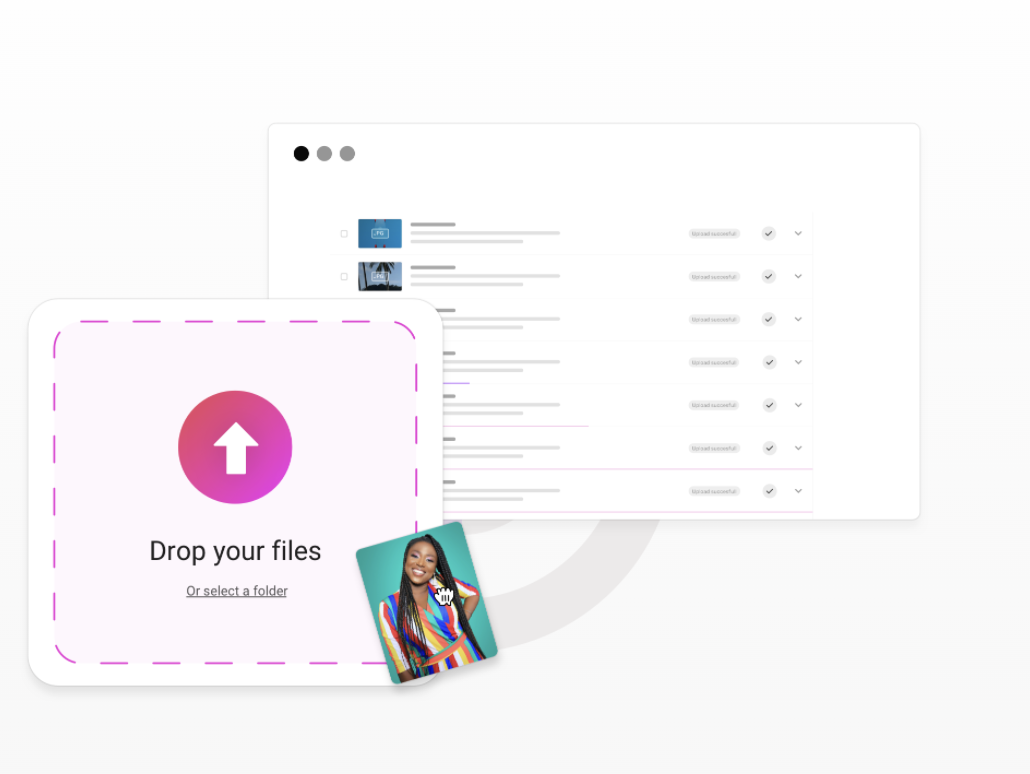
Products and features
1 min read
13 January 2022
Introducing: Digital Asset Management
With growing content there is a need for digital space. Manage, tag and assign assets that integrate with our solutions

Industry insights
3 min read
06 December 2021
VIA Nederland: The Benefits of Automation
Our partner VIA Nederland released an interesting article on why automation is so important for programmatic.

Blog
3 min read
02 November 2021
Proximus Chooses Cape For Marketing Automation
Proximus starts creating campaign with Cape's SaaS software. Read in this article on Emerce why Proximus chose Cape.
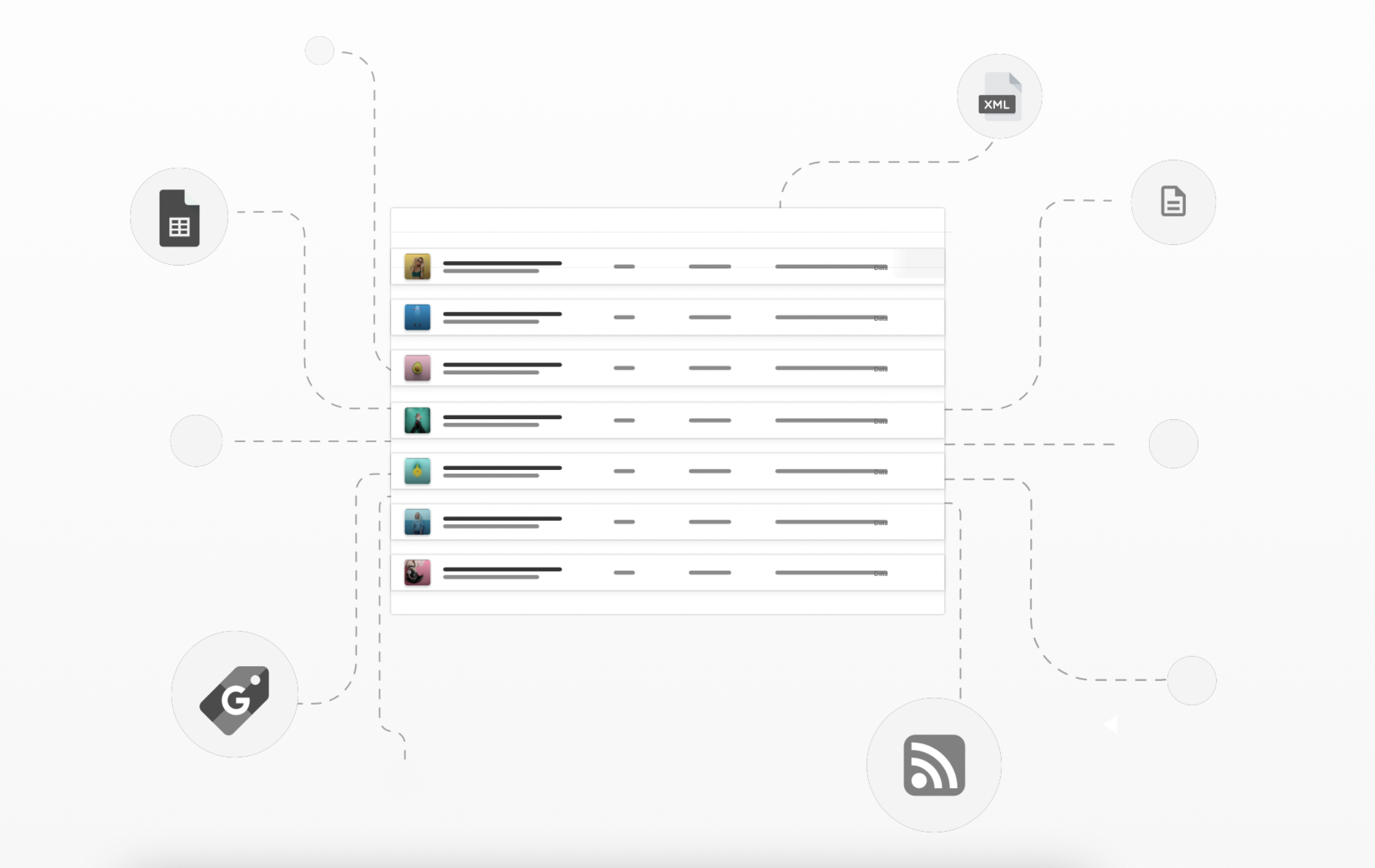
Blog
3 min read
02 November 2021
4 Misconceptions About Automation
Read in our blog on Marketingfacts what mistakes are often being made in automation, and how to avoid making these.

Blog
3 min read
02 November 2021
Content A La Carte: How Basic-Fit Does It
If you really want to localize content, you often face an organizational challenge. Read here how Basic-Fit does this

Events
3 min read
02 November 2021
ABN AMRO Tech Pitch Event 2021
Look back at the entire event, or fast forward to 45:00 when Michiel Blonk introduces Cape.


